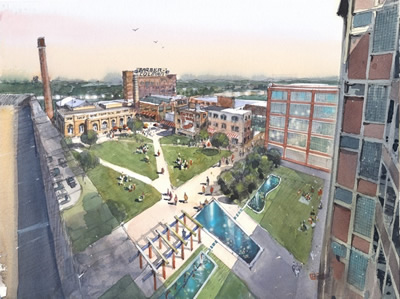Illinois
| Program | # of Grants | EDA Funds |
|---|---|---|
| Economic Adjustment Assistance | 1 | $1,967,976 |
| Public Works | 4 | $6,573,213 |
| Regional Innovation Program | 2 | $1,000,000 |
| Technical Assistance | 2 | $108,000 |
| Trade Adjustment Assistance | 1 | $1,199,419 |
| Planning | 12 | $557,212 |
| Grand Total | 22 | $11,405,820 |

Rockford, IL - The City of Rockford has long been an underserved urban community, suffering from urban blight and neglect. The city has a desperate need for a comprehensive set of solutions to the multitude of inter-related problems caused by decades of disinvestment.
In September 2017, EDA invested $2,216,435 in Public Works funds to construct the necessary infrastructure to support the redevelopment of the former 22-acre Barber Coleman Factory Campus. The project is one of several Federally funded initiatives that will collectively provide a college, an industrial park and a mixed-use development to benefit the city. The construction of the new mixed-use campus known as the Coleman Village will be anchored by a brand-new Rock Valley College Technical Training Institute. The Institute will offer technical degrees and certificate programs in automotive, welding, fluid power technology/hydraulics, and a host of manufacturing systems. The infrastructure project will be a catalyst for the new workforce training facility as well as the balance of the existing 22-acre site. The new road, water and sewer are the most fundamental and critical components to supporting additional investment.
In conjunction with other Federal, State and locally funded initiatives, the project will provide demand driven workforce training to low and moderate income individuals, address structural poverty, and revitalize the southwest side of Rockford by instituting the adaptive reuse of an existing manufacturing facility into a useful and productive community asset. The new infrastructure will also support the redevelopment of several other buildings that are targeted for mixed use, commercial and future development opportunities as they arise. The facility will create a dynamic campus that fosters individual and community economic growth through educational, vocational training, and employment in a collaborative atmosphere that promotes a healthy lifestyle and environment.




